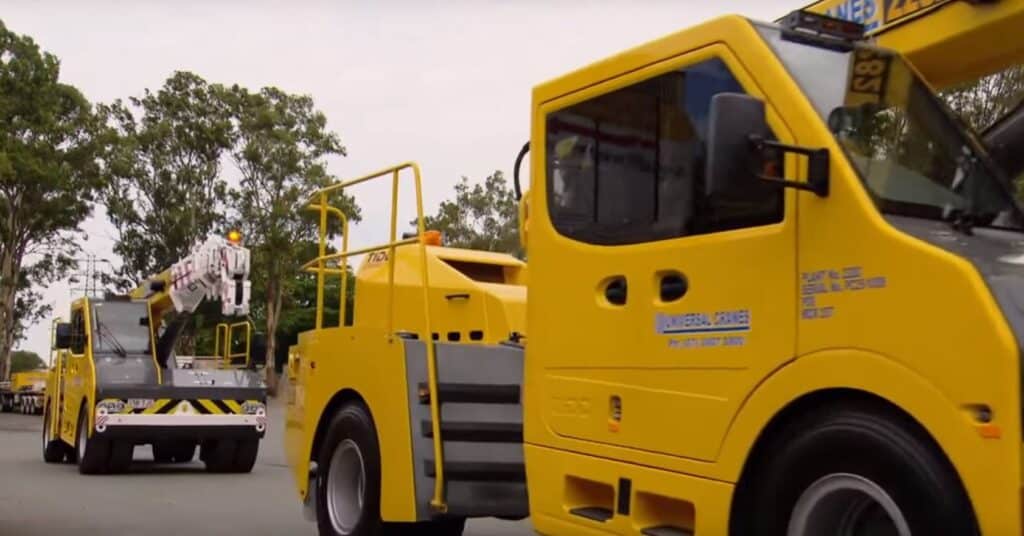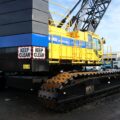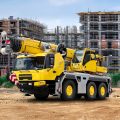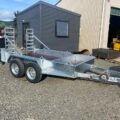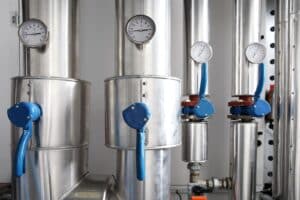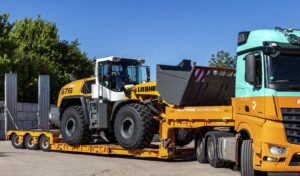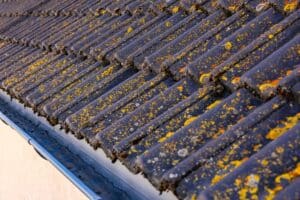Understanding What an All-Terrain Crane Is
All-terrain cranes are versatile, high-performance lifting machines designed to navigate a wide range of surfaces while providing the heavy-duty lifting capabilities of larger cranes. These mobile cranes combine the best attributes of rough terrain and truck-mounted cranes, offering both off-road agility and highway speed.
In Australia, where worksites often vary from metropolitan construction zones to remote outback locations, the adaptability of an all-terrain crane makes it a top choice for contractors and infrastructure developers.
Unlike crawler cranes or rough terrain models, all-terrain cranes can travel long distances without requiring a trailer and are designed to perform heavy lifts even on uneven or soft ground.
Their multi-axle configurations, advanced suspension systems, and telescopic booms make them particularly suited for the diverse demands of Australian projects.
Assessing the Requirements of Your Project
Load Capacity and Lift Height
The first step in choosing the right all-terrain crane for your project in Australia is determining your specific lifting requirements. This includes the maximum load you intend to lift and the height or reach needed.
All-terrain cranes are available in a range of lifting capacities, from 40 tonnes to over 500 tonnes, so matching the crane to your heaviest lifts is crucial. Overestimating capacity can drive up costs unnecessarily, while underestimating can compromise safety and delay progress.
Also, consider the lift radius and boom length required. If your job involves lifting materials over tall structures or large horizontal spans, a crane with an extended telescopic boom or the option for jib extensions may be essential.
Site Accessibility and Ground Conditions
Australian job sites can present a range of challenging ground conditions, from compact urban environments to sandy coastal sites and rocky outback terrain. When selecting an all terrain crane, assess how accessible your site is, the type of terrain involved, and any slope, moisture, or drainage concerns. One of the key advantages of all terrain cranes is their ability to perform well in these varied conditions, but choosing the correct model with the right tyre configuration, ground clearance, and stabiliser reach will ensure safe and efficient operation.
Key Features to Look For in an All Terrain Crane
Boom Length and Telescopic Reach
Boom length directly affects the range and flexibility of your lifting operations. Most all terrain cranes come equipped with telescopic booms that can extend significantly, allowing operators to lift loads over obstacles or across wide distances. Consider whether your site would benefit from additional jib attachments or luffing jibs for even greater reach and precision.
Axle Configuration and Mobility
Axle count influences a crane’s load capacity, manoeuvrability, and transport logistics. Cranes with more axles offer better load distribution and can handle heavier lifts, but they may also face restrictions on road permits and require more space to operate.
In urban Australian settings, a more compact crane with six or seven axles may suffice, while remote or heavy-duty tasks may necessitate a nine-axle model or larger. Advanced steering systems and all-wheel drive also enhance manoeuvrability, which is vital when navigating tight or rugged worksites.
Considering Australian Regulatory and Safety Requirements
Before deploying an all terrain crane in Australia, ensure you understand and comply with all local and national regulations. Crane operators must be appropriately licensed under the High Risk Work Licence system, and equipment must meet the relevant Australian Standards, including AS 2550 (crane safe use) and AS 1418 (crane design).
Additionally, certain lifts, especially in public or densely populated areas, may require permits or traffic management plans. Safety planning, including lift studies and risk assessments, is also essential and often mandated by state-level work safety authorities.
Hiring vs Buying an All-Terrain Crane in Australia
For many Australian contractors, the decision to hire or buy comes down to the frequency and scale of crane use. Buying may make sense for companies with ongoing, large-scale lifting demands, such as those in mining, utilities, or infrastructure development. Ownership provides full control and availability but comes with maintenance, storage, and compliance responsibilities.
Hiring, on the other hand, offers flexibility and access to newer technology without the capital investment. Crane hire companies across Australia typically offer a wide selection of all terrain cranes, complete with trained operators, regular servicing, and compliance with the latest safety standards. This option is particularly beneficial for one-off or short-term projects.
Analysing Brand Reputation and After-Sales Support
Brand matters when selecting an all-terrain crane. In Australia, reputable manufacturers like Liebherr, Grove, Tadano, and Demag are widely used for their proven performance, reliability, and support networks. Evaluate brands not just on initial specs, but also on the availability of parts, local service centres, and technician expertise.
Downtime due to maintenance issues can derail tight project timelines, so choosing a supplier with strong after-sales support and local presence can save time and money in the long run. It’s also worth investigating whether spare parts and technical documentation are readily accessible in your region.
Real-World Use Cases in the Australian Context
All-terrain cranes play a critical role in a wide range of Australian industries. In the mining sector, they are deployed to assemble processing plants, relocate heavy equipment, or conduct maintenance in remote areas.
In infrastructure, they’re used for bridge construction, powerline installation, and high-rise building development. The renewable energy sector, particularly wind farm construction, also relies heavily on these cranes for lifting turbine components in open, uneven terrain.
Looking at how all-terrain cranes are applied across these industries offers insight into which models and features perform best under real Australian conditions.
Final Advice for Choosing the Right All-Terrain Crane
When it comes to selecting the ideal all-terrain crane for your project in Australia, start with a clear understanding of your lift requirements and site challenges. Balance technical specifications, like boom length, load capacity, and axle configuration, with regulatory considerations, transport logistics, and cost-effectiveness.
Create a checklist that includes terrain conditions, height and weight needs, site access, compliance obligations, and whether hiring or owning suits your long-term plans.
Lastly, don’t hesitate to consult with crane hire professionals, lifting engineers, or suppliers who understand the unique demands of Australian worksites. With the right advice and equipment, your project will be positioned for both efficiency and safety.

